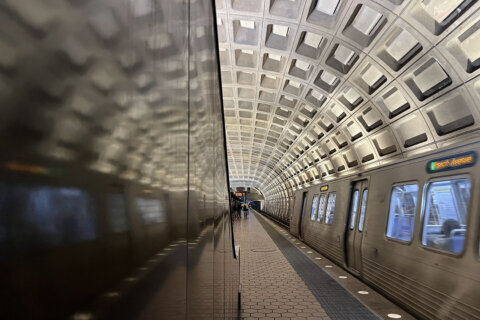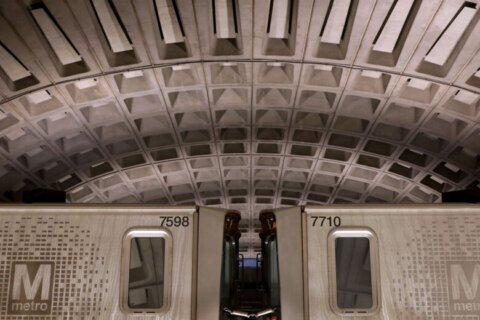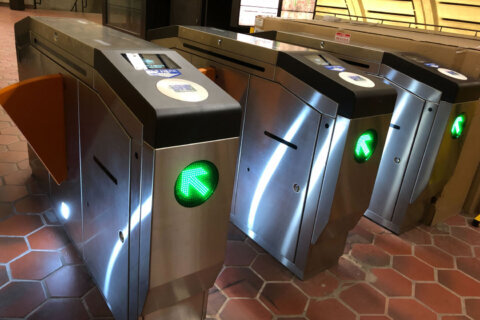Metro said that it is temporarily sidelining its fleet of 6000-series railcars, after cars on a Metro Red Line train got separated Tuesday afternoon in a tunnel near the Glenmont station.
The move was recommended by the transit agency’s chief safety officer and approved by General Manager Paul Wiedefeld. The order will remain in place indefinitely for an investigation.
Metro will use its remaining in-service fleets — the 2000/3000-series legacy cars and newer 7000-series cars — in the meantime.
” … 7000-series cars comprise more than half of Metro’s railcar fleet, and the impact to customers of today’s safety action is expected to be minimal,” Metro said in a statement.
The Washington Metrorail Safety Commission said in a statement that it supports the removal of the series “until investigators can fully understand the underlying causes of and contributing factors to this train separation.”
Tuesday’s car separation happened around 1 p.m., and 12 passengers were evacuated. One with a medical condition was taken to the hospital with a non-life-threatening condition.
Montgomery County Fire and Rescue Service spokesman Pete Piringer said there was no fire, smoke or serious injuries, and that the incident happened less than 100 yards from the station.
Update — Glenmont Metro Station, Georgia Avenue, train headed from Wheaton to Glenmont separated/the couple at interlocking area near Glenmont Station, @MCFRS_EMIHS evaluated 12 passengers & transported 1 adult (medical) NLT, passengers on train were evacuated https://t.co/dJhUXzFNUh pic.twitter.com/fYVvZ3KiJP
— Pete Piringer (@mcfrsPIO) November 24, 2020
Service between Glenmont and Forest Glen was restored later Tuesday evening.
Metro said it ordered the removal of the 6000-series due to similarities between Tuesday’s incident and another separation that happened last October between two cars of a Red Line train outside Union Station.
While the investigation continues into the October separation, Metro said that the cars separated at the train’s coupler — a large latch at the end of each railcar that securely connects it to adjoining cars.
Chief Safety Officer Theresa Impastato told WTOP that where the rail cars separated on Tuesday apeares to be at the coupler, as well.
“The order to remove the fleet from service is given that we’ve noted that components in the same assembly, the coupler assembly, failed. And until we determine the exact cause of the failure, and whether or not it’s related to what occurred in October, we wanted to make sure that we grounded the fleet to protect our customers and the riding public,” Impastato said.
Metro has engaged the manufacturer and a third-party engineering support to figure out what caused Tuesday’s incident and whether what happened was related to the separation last October.
Metro said that the train’s emergency brake, designed to engage in the event that cars separate, worked as intended, and the incident was reported to the Rail Operations Control Center, which requested an emergency response.
“The 6000-series fleet entered service in 2006 with 184 cars delivered over the subsequent three years. The fleet is approaching ‘mid life,’ the 20-year milestone where railcars are put through a comprehensive overhaul,” Metro said in a statement.
Two of the 184 rail cars were decommissioned and two were repurposed. Metro has 180 of the 6000-series out its almost 1,200 rail cars.
“Rail cars typically provide passenger service over a 40-year life span, assuming a midlife overhaul is conducted.”









